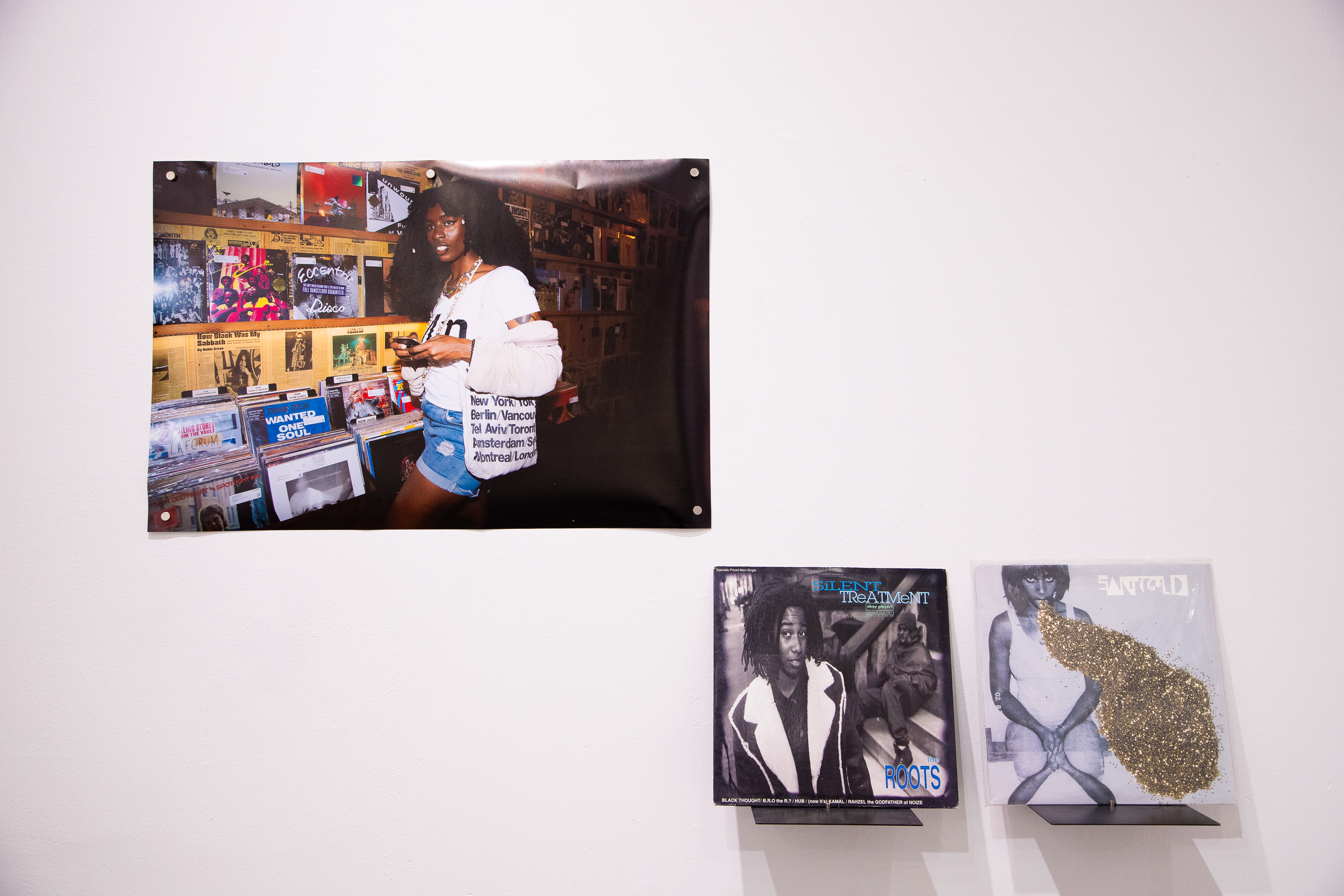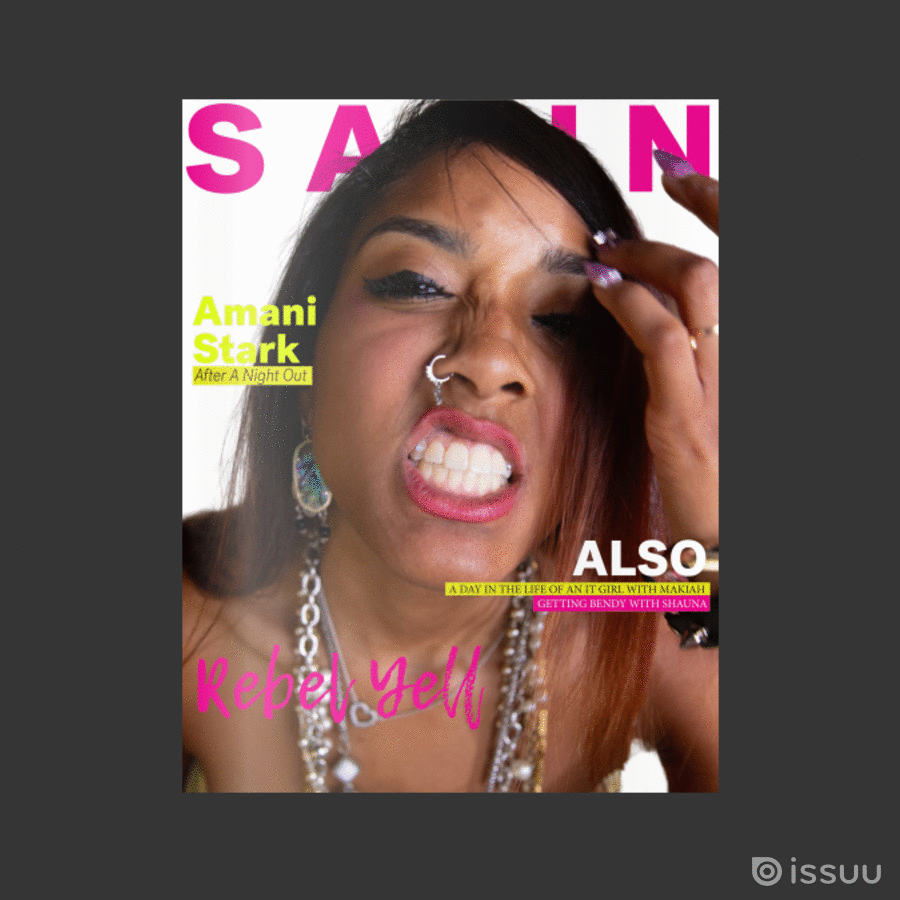SATIN
Melissa Alicia Simpson’s solo photography exhibit revisits a bygone cultural era through the lens of Black experience and collective liberation.
PHILADELPHIA, January 22, 2025 —Tiger Strikes Asteroid (TSA PHL) is pleased to present SATIN, a solo exhibition by photographer, writer, and multimedia artist, Melissa Simpson opening on Saturday, February 22, and running to Saturday, April 5.
SATIN is a reimagining of the hipster/indie sleaze era of the mid-2000s to early 2010s that pays homage to the Black women who helped to define the era. Rife with emblematic ephemera from the time, SATIN envisions a world where the creative and trendsetting nature of Black women is celebrated while also investigating the significance of fabric in fashion, culture, self-expression, and liberation.
A LETTER FROM THE ARTIST
This text was originally published in and for SATIN MAGAZINE.
A lot of us won’t care to admit it, but I care a lot about what people think. I used to care even more when I was 16 years old, struggling to get a grasp on identity and autonomy. Then and now, music was an integral part of my life. It started with late-’90s and early-’00s pop, top-40 hip-hop, then emo and pop punk. I was around 16 or 17 when I finally started listening to “good” music. What made it “good”? It wasn’t mainstream, it didn’t sound like anything else I’d heard before, and it made me feel like an individual. It was Santigold’s self-titled album. It was J*Davey’s Beauty in Distortion, the inspiration for my second tattoo. It was The Bake Sale by The Cool Kids.
Yet another integral part of my formative years was my deep affection for alt-media. I religiously read Philly Weekly, City Paper, Nylon, Missbehave, and 215 Magazine. I pored over images of nightlife, street fashion, and East Coast It girls. Everything I witnessed in those glossy pages was just a hair out of reach—I was too young, too poor, too sheltered, a little too off-kilter to really experience the early years of the indie sleaze era like I wanted to. Thankfully, my affinity for thrifting, layering, and eclectic accessories lent itself to the themes of the time. Towards the end, I was able to find my little pockets of hipster heaven at spots like Silk City, Kung Fu Necktie, and The Barbary.
Once I reached my twenties, Philly nightlife became the thread connecting me to my teenage ideals of adulthood—the early-’00s fun I so longed to be a part of. In hindsight, what made me so eager to experience nightlife in this way was the documentation of the scene. There was Cobra Snake, Bronques, and in Philly, we had Shots Fired. There was MySpace and Facebook. We didn’t have insane cameras attached to our phones to document our looks and the evening’s debauchery; instead, we depended on the likes of the aforementioned to make us look cool and interesting. We prayed they didn’t immortalize our faces in some weird contortion, that we weren’t too sweaty from dancing all night. Being the focal point in front of one of their lenses gave us social collateral that can’t quite be duplicated in the age of iPhones and Instagram.
I didn’t seriously pick up a camera until eight years after the onset of Instagram. Even now, I can’t quite tell you why I decided to start shooting. I can presume I was craving self-expression, acceptance, or a way to temper an innate desire to be creative in a way I felt I had never truly tapped into. Perhaps I wanted to be the arbiter of what was interesting and en vogue. I can definitively say that I wanted to eternalize moments that I, and I alone, deemed fascinating, significant, and commonly overlooked. And for a while, I fed my work into the ravenous monster that is Instagram—my hard work and vision, what felt meaningful, sent off to live in the black hole where all content goes to die. And I don’t fault myself for playing into this then and now. Again, I began my creative practice in the age of Instagram, and for a while, I played by its rules, working to earn its social collateral. But I quickly realized that the perceived value of engaging on that platform, and playing by its rules, influenced my work in a way I didn’t like. I’m still there and will be for a while, but the way me and my work show up there is not for the same reasons it used to be.
I think with all my work, there is going to be some sort of interrogation of the social collateral of the still image. The FOMO I had thumbing through 215 Magazine and Nylon, anticipating the release of Facebook albums showing photos from the weekend prior, the likes and reshares on Instagram—all of this was the root inspiration for SATIN. Additionally, exploring what it meant to be a Black girl coming of age and defining personal taste in this era. To be weird and find a home here.
I started off this project wanting to highlight three common motifs of the Indie Sleaze era: after a night out, a day in the life of an It Girl, and an American Apparel ad. As a Black woman, my subjects were inherently going to be other Black women, so that was a no-brainer. Off rip, SATIN was going to be a project that put the Black women who defined this era on a pedestal. In the early planning stages, I knew I wanted to incorporate what I formerly (and ignorantly) called a hipster scarf—it was a period-defining piece of clothing that was second only to skinny jeans. But as I worked on this project during the summer of 2024, I knew I couldn’t be cavalier when incorporating the keffiyeh into a scene. Thus, a fourth and final motif was born. The keffiyeh has more commonly come to be known as a symbol of resistance, not just a fashion statement. And let’s be clear, the garment had significance to Arab communities long before it was a mainstay in Williamsburg or NoLibs during the 2000s.
But again, here I was in the summer of 2024, with not just social but political collateral being rationed out on social media apps and news outlets while genocides, famines, and uprisings were happening around the globe. Palestine’s genocide was the main focus, while coverage and awareness of crises in Sudan, the Congo, and Haiti paled in comparison. Around that time, Philly was also protesting a proposed arena that would displace countless residents and businesses in Chinatown. At every rally, people of varying ethnicities donned a keffiyeh, advocating and protesting on behalf of a subjugated community. That garment once again represented counteraction to brutality, violence, and marginalization.
Satin started off as bullet points in my Notes app but has transformed into a love letter to Black women, an ode to a bygone era and its cultural impact, an interrogation of social currency through photography and social media, and a fist raised to all people fighting for liberation.
– Melissa Alicia Simpson






























